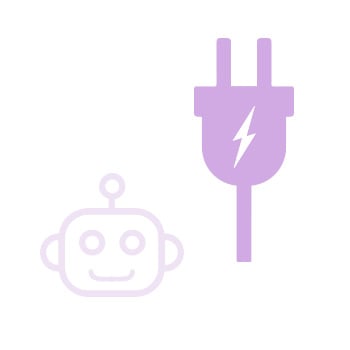
by Teemu Kinos
on March 14, 2019
Can we combine human and artificial intelligence?
Mankind’s insatiable thirst for greater intelligence and knowledge spans the great depths of history. Human-to-human learning isn’t anything new – we’ve been teaching each other since the dawn of our existence and that still hasn’t changed much today.
What has changed is who we’re teaching. Instead of just teaching other humans, we’re teaching machines and robots to be more like us and do jobs for us. But does it stop there? Are we contributing towards our own extinction or is AI just a resource to augment human learning?
What is human intelligence and what is artificial intelligence?
Human intelligence – the general mental ability to reason, solve problems, and learn new things – is what makes us who we are. We’re able to learn from our experiences and surroundings, adapt to new situations, and process and communicate extremely abstract ideas.
Simply, we take source information, process it, and then make decisions based on the output of that. Scientists today are trying to emulate this with machines and robots.
So what is artificial intelligence?
Merriam Webster defines artificial intelligence as “the capability of a machine to imitate intelligent human behavior”.
Just as humans need books, machines need algorithms. Just as we need years of contextual conditioning from toddlers to adults, machines often need hundreds and thousands of input source data to identify trends, learn, and work.
Artificial intelligence has two main branches - applied and generalized. Applied AI is the most common form of AI today and is used to solve and automate only specific problems and tasks. This goes for anything from automated cars to retargeting in marketing.
Generalized AI is the much harder form to create and is therefore much less common. Generalized AI isn’t programmed to perform just one thing, it’s able to handle many different tasks - just like humans. Machine learning was born as a derivation of generalized AI.
In 2018, the global AI market was expected to be worth approximately $7.35 billion U.S. dollars, and is projected to increase to $89.8 billion by 2025.
Humans vs. Machines

As much as this sounds like the plot line from The Terminator, this is how the media and others have represented the rise of artificial intelligence in the past few years. It’s a binary choice of us or them.
At GetJenny, we ask “Why not both?”
As referenced by Hackernoon, “machine-based knowledge far exceeds the capacity of the human brain as far as memorizing knowledge, understanding, and comprehending are concerned”. We believe there’s a good purpose for this.
No matter how machines are programmed or built, they’re only as good as the people who built them. They’re only as smart as the data that feeds them. Artificial intelligence isn’t necessarily about coming up with new knowledge, it’s about processing the knowledge which we as humans physically cannot do efficiently enough.
Think of it as channeling the collective knowledge of millions of very smart humans through a speed gun to help us in our everyday lives and work.
That’s why it’s human-to-human. The knowledge doesn’t just stop with the machines – it’s applied to help us. We believe that AI’s true purpose is to augment our human lives. To improve it, enhance it, even make it more rewarding.
Now instead of manually answering repetitive customer service questions or reading documents that are thousands of pages long where one tiny detail can mean the difference between success or failure, we have machines to help us do these things. This doesn’t mean we’re going to be replaced. It simply means that instead, we can focus on other tasks that require empathy and human experience.
According to a study by PwC, $62 billion is lost every year through poor customer service. AI chatbots can help plug that leak by going above and beyond what humans are able to do physically and affordably. To quote PwC, “[AI] could shift today’s run-of-the-mill standard to a personalized, digital concierge run by man but with the heavy lifting done by machine”.
How to approach the chatbot project in a human-directed way?
In case you also think there’s too much focus on AI and machine learning in context of customer service and we should focus on improving our human utility instead, you may enjoy our first webinar. There Annu Karhu and Ilkka Vertanen discuss the elements of a successful chatbot project based on the GetJenny learnings.
As honesty is our core value, we’d like to mention that professional writers have helped us
with this text.

Teemu Kinos
GetJenny CEO & Co-founder
Similar articles

Chatbot Case Studies for Media and Entertainment Companies
How can media and entertainment companies keep up with customers? Learn how chatbots help service teams stay on track and serve customers better.

4 Things You Need to Know When Considering Chatbots
Ersin walks through the surprising opportunities potential chatbot customers miss in their chatbot project planning.

Infographic: Customer Experience in the Energy Sector
Key insights for customer experience in the Energy and Utilities sector in a handy one-sheet. Get the facts and numbers in one place.


